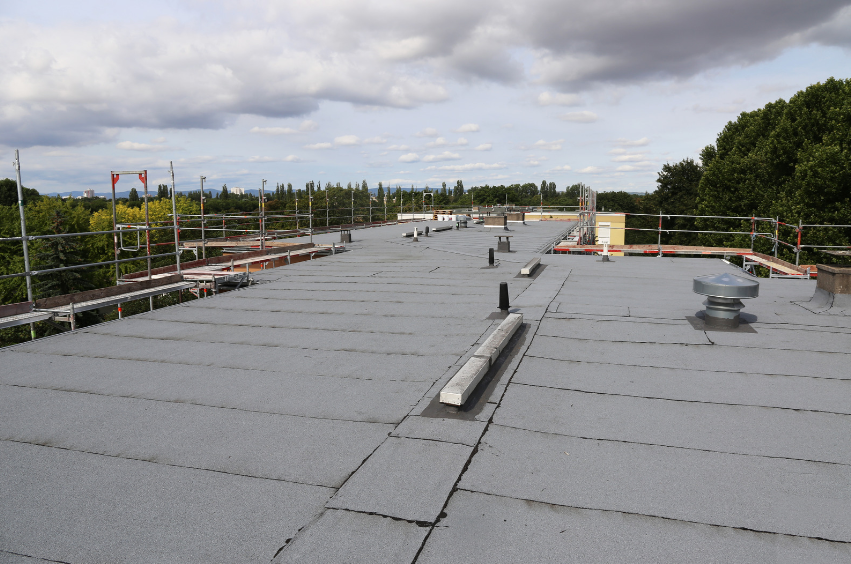Roof waterproofing is crucial in safeguarding your property from water damage and extending the lifespan of your roof. Proper waterproofing solutions ensure that your roof remains intact against the elements, preventing costly repairs and structural damage. In this blog, we will explore various waterproofing methods, discuss common issues, and provide insights on choosing the best solution for your needs.
Understanding Roof Waterproofing
Roof waterproofing involves applying materials or techniques to prevent water from penetrating your roof and causing damage. This process is essential for maintaining the integrity of your roof, avoiding leaks, and protecting your property from potential water damage. Effective waterproofing solutions not only shield your roof from immediate issues but also contribute to long-term durability and maintenance.
Common Roof Waterproofing Problems
Several problems can arise if your roof is not adequately waterproofed. These issues include leaks, water damage, and mould growth, which can lead to serious structural damage if not addressed promptly. Identifying these waterproofing problems early is key to preventing more significant damage and ensuring your roof remains effective against the elements.
Types of Roof Waterproofing Solutions
- Liquid Applied Membranes Liquid applied membranes are a popular choice for roof waterproofing due to their seamless coverage and flexibility. This type of waterproofing solution involves applying a liquid coating that cures to form a continuous membrane. It is ideal for complex roof shapes and areas with many joints and details. The flexibility of liquid membranes ensures a durable waterproofing layer that can accommodate roof movement and settling.
- Bituminous Membranes Bituminous membranes are another effective waterproofing solution, known for their durability and ease of installation. These membranes are made from bitumen, a sticky, tar-like substance, and come in various forms, including modified bitumen and traditional bitumen. They provide a robust barrier against water infiltration and are suitable for a wide range of roof types.
- EPDM Rubber Membranes EPDM (Ethylene Propylene Diene Monomer) rubber membranes are renowned for their longevity and UV resistance, making them a reliable waterproofing solution. This synthetic rubber material creates a flexible and resilient barrier against water, ensuring your roof remains protected over time. EPDM membranes are particularly effective in climates with extreme weather conditions.
- PVC and TPO Membranes PVC (Polyvinyl Chloride) and TPO (Thermoplastic Olefin) membranes offer energy-efficient and flexible waterproofing solutions. Both types of membranes provide excellent resistance to UV rays and chemicals, making them suitable for various applications. PVC and TPO membranes are particularly beneficial for roofs that experience high traffic or harsh environmental conditions.
- Roof Coatings Roof coatings, such as acrylic and silicone, are another viable option for waterproofing. These coatings are applied over existing roof surfaces to create a protective layer that reflects sunlight and resists water penetration. Roof coatings are easy to apply and maintain, making them a cost-effective choice for enhancing your roof’s waterproofing capabilities.
Choosing the Right Waterproofing Solution
Selecting the appropriate waterproofing solution depends on several factors, including your roof type, climate, budget, and building usage. Each waterproofing method has its advantages and is suited to specific scenarios. Consulting with a professional can help you determine the most suitable solution for your needs, ensuring optimal protection and performance.
Professional Installation vs. DIY
- Professional Installation Professional installation of waterproofing solutions offers numerous benefits, including expertise, quality assurance, and warranty coverage. Skilled professionals have the knowledge and experience to ensure that waterproofing materials are applied correctly, providing long-lasting protection for your roof.
- DIY Waterproofing While DIY waterproofing can save costs, it may come with risks if not executed properly. Successful DIY waterproofing requires careful planning, accurate application, and adherence to safety guidelines. For those who choose to tackle waterproofing projects themselves, it is essential to follow instructions meticulously and consider seeking advice from experts.
Maintenance and Inspection
Regular maintenance and inspection are vital for preserving the effectiveness of your roof waterproofing. Routine checks can help identify signs of wear, damage, or potential leaks early, allowing for timely repairs or reapplication of waterproofing materials. Keeping your roof in good condition ensures that it continues to provide reliable protection against water damage.
Cost Considerations
The cost of waterproofing solutions varies depending on the type of material, roof size, and complexity of the installation. Understanding these cost factors can help you budget effectively and choose a solution that aligns with your financial plan. Exploring cost-saving strategies, such as comparing quotes and evaluating different materials, can also help you manage expenses.
Takeaway
Waterproofing is an essential aspect of roof maintenance and protection. By understanding the various waterproofing solutions available, identifying common problems, and choosing the right approach for your needs, you can ensure that your roof remains secure and durable. For professional advice and tailored recommendations, consider consulting with a roofing expert to achieve the best results for your property.




